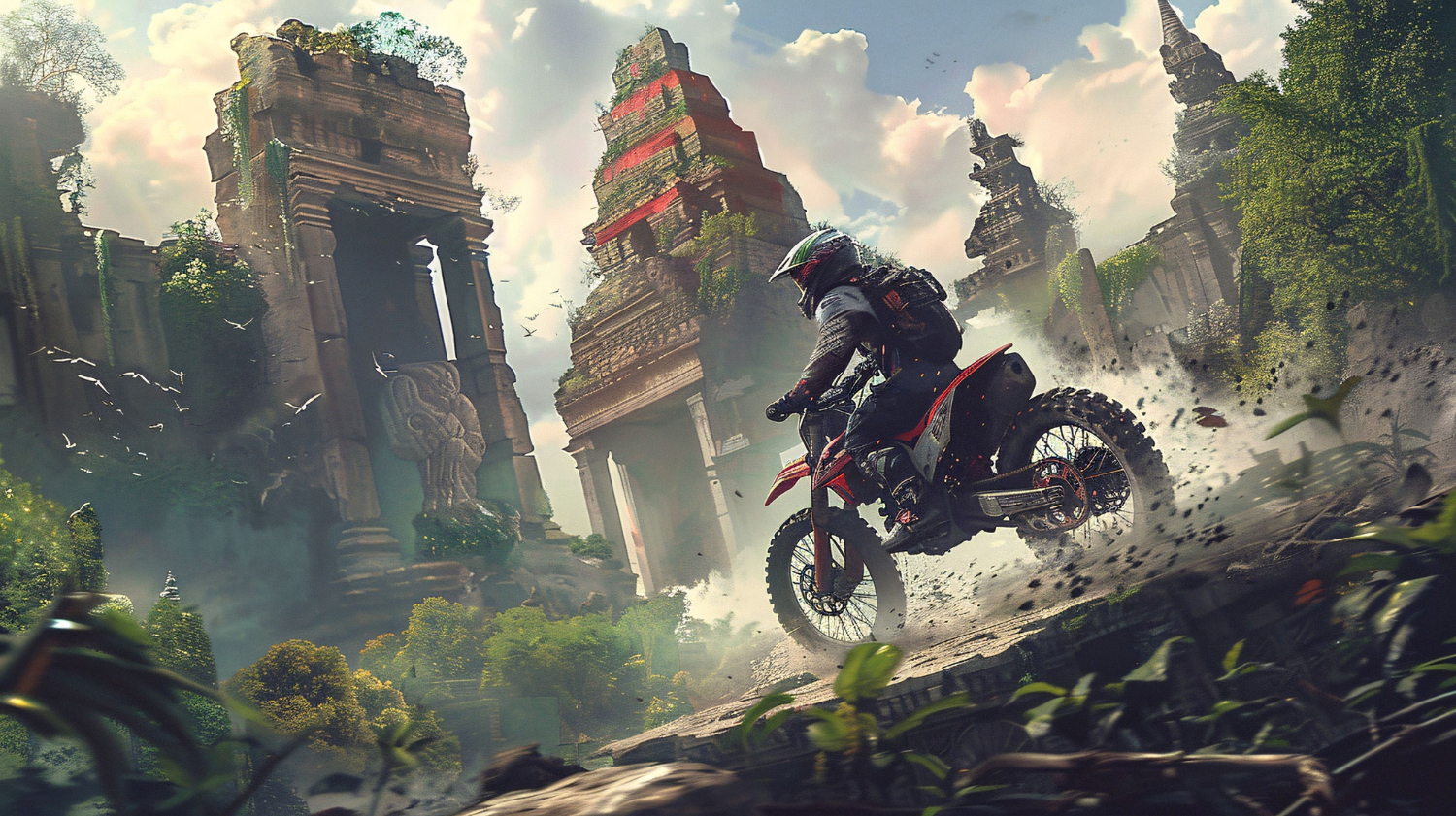3D models are the backbone of immersive and visually captivating experiences in video game design. From the lush, detailed environments of open-world games to the intricate characters in RPGs, 3D modeling is the cornerstone tool that brings virtual worlds to life. Without these meticulously crafted models, the magic of video game design would be significantly diminished, leaving players with flat, unengaging experiences.
This comprehensive guide will cover the essentials of making 3D models for video game design, from basic concepts and ideas to professional tools and techniques, helping novices and aspiring designers kickstart their journey.
Understanding 3D Modeling in Video Game Design
Basics of 3D Modeling
3D modeling is the process of creating a mathematical representation of a three-dimensional object or shape. These models are constructed using specialized software programs that allow designers to build, manipulate, and refine their creations with precision. In the context of video game design, we create 3D models that are used to represent characters, environments, props, and other in-game assets.
Key Concepts
- Objects: The fundamental building blocks of 3D models, representing anything from simple geometric shapes to complex characters and environments.
- Shapes: The form or outline of an object, which can be manipulated to create intricate designs.
- Surfaces: The outer layer of a 3D model that defines its appearance and texture.
- Textures: Images or patterns applied to the surface of a 3D model to give it color, detail, and realism.
- Materials: Properties assigned to a model’s surface that determine how it interacts with light, affecting its shininess, transparency, and reflectiveness.
Importance of 3D Models in Games
Creating Immersive and Realistic Game Environments
3D models are essential for creating immersive game environments that captivate players and enhance their gaming experience. By using detailed and lifelike models, game designers can build rich, interactive worlds that feel real and engaging. The textures, shapes, and materials used in these models contribute significantly to the overall aesthetic and atmosphere of space in the game, making it more appealing and enjoyable for players.
Examples of Successful Games with Stunning 3D Graphics
- The Witcher 3: Wild Hunt: Known for its breathtaking landscapes and detailed character models, this game showcases the power of 3D modeling in creating a vibrant, immersive world.
- Horizon Zero Dawn: With its stunning post-apocalyptic environments and lifelike robotic creatures, this game exemplifies how high-quality 3D models can enhance storytelling and gameplay.
- Red Dead Redemption 2: This game’s realistic characters and expansive open-world environments are a testament to the importance of detailed 3D modeling in delivering an engaging and believable gaming experience.
Getting Started with 3D Modeling for Video Game Design
Essential Tools and Software Programs
Overview of Specialized Software for 3D Modeling
- Blender
- Features: Open-source and free, Blender offers a comprehensive suite of tools for modeling, texturing, animation, and rendering.
- Benefits: Highly versatile with a strong community support, making it ideal for both beginners and professionals.
- Autodesk Maya
- Features: Known for its powerful modeling, animation, and rigging tools, Maya is a professional-grade software used widely in the industry.
- Benefits: Offers advanced features for character creation and animation, making it a preferred choice for high-end game development.
- 3ds Max
- Features: Provides robust modeling and rendering capabilities, with a particular strength in architectural visualization and large-scale environments.
- Benefits: Intuitive interface and extensive plugin support, suitable for detailed environmental modeling and complex animations.
- SketchUp
- Features: User-friendly interface with strong CAD integration, ideal for quick 3D modeling and architectural designs.
- Benefits: Easy to learn and use, with a large library of pre-built models and extensions.
Choosing the Right Software : Factors to Consider for Video Game Design
- Ease of Use: Beginners should look for intuitive interfaces and comprehensive tutorials.
- Available Features: Ensure the software has the necessary tools for your specific projects, such as sculpting or animation capabilities.
- Budget: Consider whether free software like Blender meets your needs or if the investment in paid software like Maya or 3ds Max is justified.
- Project Requirements: Select software based on the type of models you want to create (e.g., characters, environments, props).
Comparison of Free vs. Paid Software Solutions
- Free Software: Blender offers extensive features without cost, making it accessible for beginners and those on a budget.
- Paid Software: Programs like Autodesk Maya and 3ds Max provide advanced tools and professional-grade support, suitable for serious game developers and studios.
The 3D Modeling Process to Video Game Design
Step-by-Step Guide to Creating Your Own Models
Basic Steps in Creating a 3D Model
- Concept: Begin with an idea or sketch of the model you want to create.
- Drawing: Create a 2D outline or blueprint of your model.
- Modeling: Use software tools to build the 3D structure based on your drawings.
- Texturing: Apply textures to give the model color, detail, and realism.
- Rendering: Generate the final image or animation of your model.
Detailed Breakdown of Each Step
- Concept: Define the purpose and look of your model, gather reference materials, and sketch initial designs.
- Drawing: Use digital or traditional methods to outline your model from multiple angles.
- Modeling: Utilize tools such as extrusion, beveling, and subdivision to shape your model.
- Texturing: Import or create textures, then map them onto your model using UV mapping techniques.
- Rendering: Adjust lighting, camera angles, and rendering settings to produce the final image or animation.
Understanding Key Features and Tools
Overview of Important Tools
- CAD: Computer-Aided Design tools for precision modeling and engineering designs.
- Drag-and-Drop: Simplifies placing and modifying objects within your model.
- Sculpting: Allows for detailed, organic shaping of models, ideal for characters.
- Animation Tools: Enable the creation of movement and interactions within your models.
Tips for Manipulating Objects, Adjusting Shapes, and Capturing Accurate Details
- Manipulating Objects: Use transformation tools to move, rotate, and scale objects accurately.
- Adjusting Shapes: Employ subdivision and smoothing techniques to refine your models.
- Capturing Accurate Details: Utilize high-resolution textures and normal maps to add intricate details.
Practical Tips for Beginners to Video Game Design
Starting with Simple Projects
Recommended Beginner Projects
- Creating a Box: Start with basic shapes to understand modeling tools and transformations.
- Character Model: Begin with simple characters to practice sculpting and rigging.
- Simple Environment: Design a basic scene with props and terrain to learn environment modeling.
How to Test and Refine Your Models
- Testing: Import your models into game engines or rendering software to check for issues.
- Refining: Make iterative adjustments based on feedback and testing results to improve quality and performance.
Advanced Techniques and Best Practices
Creating Realistic and Accurate Models
Techniques for Adding Realistic Textures and Materials: To achieve realism in your 3D models, focus on texturing and material creation. Utilize high-resolution textures and advanced material shaders to mimic real-world surfaces like metal, wood, or fabric. Experiment with techniques such as procedural textures and texture painting to add depth and detail to your models.
Capturing Life-like Details and Ensuring Accurate Scale: Pay attention to fine details such as wrinkles, scratches, and imperfections to enhance the realism of your models. Use reference images and real-world measurements to capture and ensure accurate scale and proportions. Employ techniques like photogrammetry or 3D scanning for precise object replication and lifelike character modeling.
Optimizing Models for Game Engines
Tips for Ensuring Models are Game-Ready: Before exporting your models to game engines, optimize them for performance and compatibility. Reduce file size by simplifying geometry and using efficient texture compression methods. Optimize surfaces by baking textures, adjusting LOD (Level of Detail), and minimizing polygon count. Ensure compatibility with game engines by adhering to their specific requirements and guidelines.
Workflow for Integrating 3D Models into Popular Game Engines: Follow these steps to seamlessly integrate your 3D models into game engines:
- Export your models from the 3D modeling software in a compatible format.
- Import the models into the game engine’s asset library.
- Set up materials, textures, and shaders to achieve the desired visual effects.
- Place the models within the game environment and adjust lighting and camera settings as needed.
- Test the performance and functionality of the models within the game engine, making adjustments as necessary.
Future Trends in 3D Modeling for Video Game Design
Emerging Technologies and Trends
Impact of AI and Machine Learning on 3D Modeling AI and machine learning technologies are revolutionizing 3D modeling by automating repetitive tasks, enhancing creativity, and improving production and workflow efficiency. From automated texture generation to intelligent character rigging, AI-powered tools are poised to transform the way 3D models are created and manipulated.
Future of 3D Modeling Tools and Software The future of 3D modeling tools is characterized by increased accessibility, collaboration, and integration. Cloud-based platforms, real-time rendering engines, and virtual reality (VR) modeling environments are shaping the next generation of 3D modeling software, empowering artists and engineers with innovative features and seamless workflows.
Career Opportunities and Industry Insights
The Growing Demand for Skilled 3D Modelers in the Video Game Industry
As the video game industry continues to expand, so does the demand for skilled 3D modelers who can create compelling and immersive gaming experiences. From indie studios to AAA game developers, it appears there are ample opportunities for talented 3D artists to thrive and contribute to the ever-evolving landscape of video game design. Whether you’re creating objects for a new indie game or working on a blockbuster title for Windows platforms, the gaming industry offers a diverse range of opportunities for aspiring 3D modelers. Explore job listings, industry website, and networking events to kickstart your career in this dynamic field.
Insights from Professional Game Designers and 3D Artists
Learn from industry professionals, including architects, who have firsthand experience in the field of video game design and 3D modeling. Gain full access to valuable insights into industry trends, best practices, and career pathways through networking, mentorship, and participation in industry events and conferences. Explore different categories of knowledge and rest assured that your journey into the world of 3D modeling will be guided by expertise and experience.
Conclusion
In conclusion, this article has outlined the best software and various ways to embark on the journey of 3D modeling. From understanding key concepts to optimizing models for game engines, we’ve covered essential points to kickstart your exploration. Now, it’s time to point your creativity towards the screen and start experimenting with lines, photos, and textures to bring your ideas to life. Don’t hesitate to start from scratch, as every project is a learning opportunity. Explore 3DAiLY, a Generative AI tool for making detailed 3D models effortlessly. Let’s embark on this exciting journey together and push the boundaries of creativity in the world of 3D modeling.




